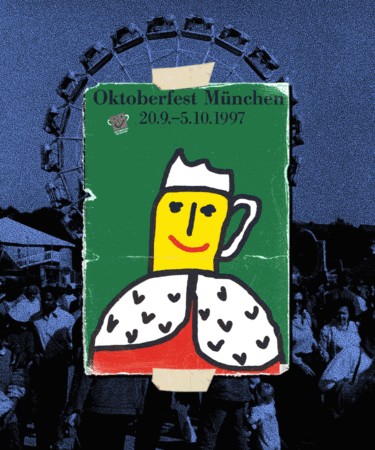A must-do bucket list item for beer lovers and world travelers alike, Oktoberfest is the world’s largest beer festival, attracting millions of drinkers to Munich, Germany, from all over the globe. Despite its name, Oktoberfest actually kicks off in September each year, and carries on for just over two weeks before concluding on the first Sunday of October. This year, the festival’s organizers actually extended the festival beyond the first weekend of the month to conclude on Tuesday, Oct. 3, German Unity Day, which celebrates the country’s reunification after the collapse of the German Democratic Republic, or East Germany.
While Oktoberfest may lead up to German Unity Day, the festival itself actually dates back to 1810 when the citizens of Munich were welcomed to eat and drink for five days straight in celebration of the impending nuptials between Prince Ludwig of Bavaria and Princess Therese of Saxony-Hildburghausen, hence the name Theresienwiese, the plot of land the festival is held on each year. Six years after the festival’s inception, carnival booths and games were introduced for entertainment purposes, which eventually evolved into the raucous beer tents that are the festival’s signature today. By 1818, the festival had transformed to become more beer-centric — while maintaining a carnival atmosphere — and by 1892, beers were being slung around in the massive goblets Oktoberfest is practically synonymous with now.
In 1952, 142 years after the first Oktoberfest celebration, the Department of Labor and Economic Affairs (RAW) of the City of Munich started hosting a competition for artists to put forth their designs to serve as that year’s official festival poster. Each year, hundreds of designs are submitted to the competition that are then voted on by Oktoberfest fans to narrow down the 30 most popular designs. Then, a team of judges selects the design to be featured from these 30 options with the winner receiving the glory and 2,500 euros.
With over 70 years of posters, there is a plethora that encapsulates the essence of Oktoberfest’s celebrations, with these 10 doing a particularly good job. Check out an illustrated history of Munich’s iconic Oktoberfest below.
Oktoberfest München 1952
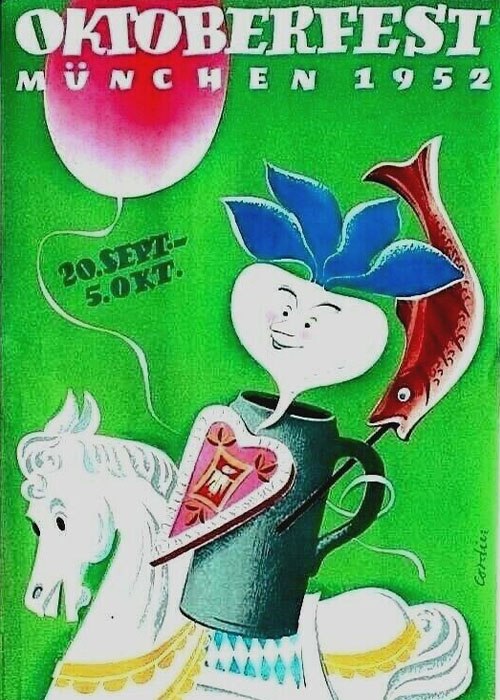
The flagship Oktoberfest poster was created by German artist Eugène M. Cordier and features a number of iconic festival staples in its design. In the illustration, a beet-headed man with a beer mug for a body is depicted riding a horse and carrying a fish on a stick. This may seem confusing and relatively disjointed to those unfamiliar with the festival, but really makes a whole lot of sense given the historical context. Beets, which are native to Germany, are often served roasted or pickled at the festival, while each beer is served in the now-iconic Maß, a massive beer mug. Steckerlfisch, considered a delicacy in Bavaria, is another common dish at Oktoberfest and consists of grilled white fish served on a stick. For 150 years, horse racing was an integral part of Oktoberfest celebrations every year, paying homage to the first festival, which revolved around a race in which the entire royal family was in attendance. While racing was discontinued in 1960, the history of horse racing at Oktoberfest remains an essential part of the festivities, and is referred to in many posters over the years.
Oktoberfest München 1963
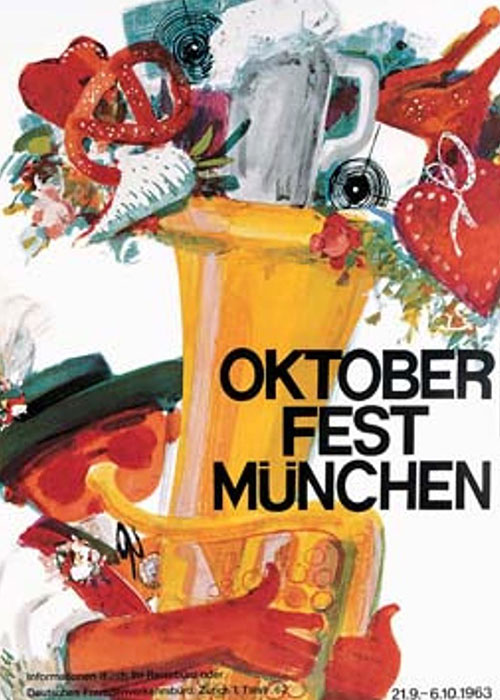
Oktoberfest’s 1963 poster was illustrated by Ernst Wild, a German artist who also designed the 1960, 1961, 1962, and 1965 posters. German brass music is not only of traditional significance for Bavaria, but also to Oktoberfest, providing each tent with the joyous oompah music that defines the festival. The 1963 poster depicts a musician dressed in traditional German garb playing a tuba overflowing with pretzels, beer mugs, and turkey legs — three more Oktoberfest staples.
Oktoberfest München 1997 and 1998
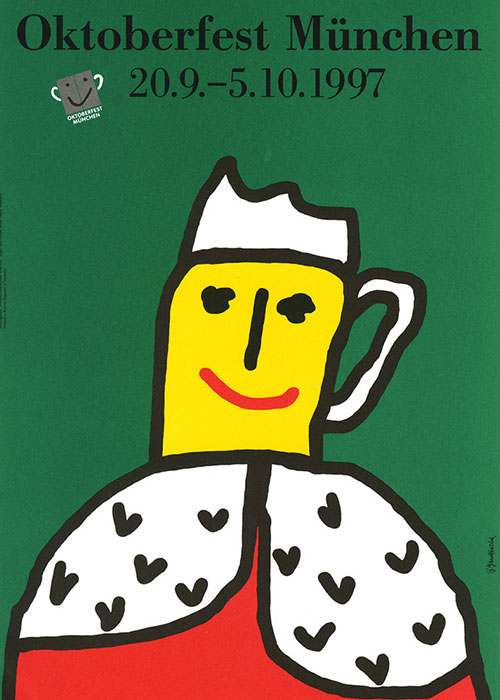
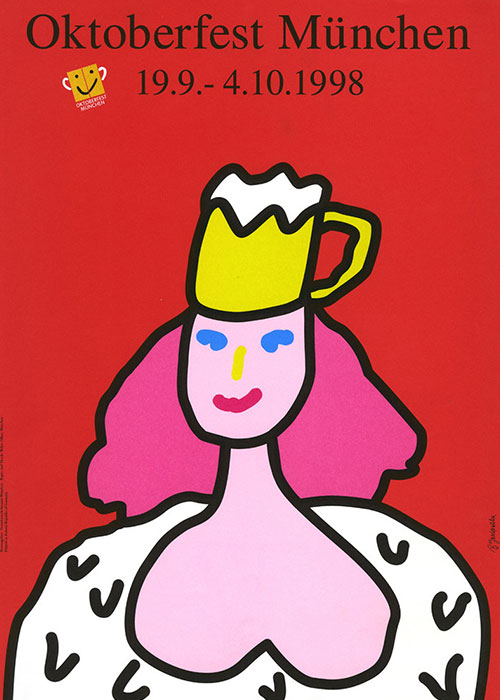
Both the 1997 and 1998 Oktoberfest posters pay homage to the two royals who sparked a centuries-long celebration: Prince Ludwig and Princess Therese. Both posters were illustrated by Bozena Jankowska and depict the couple wearing their regal clothing and wearing crowns shaped like Oktoberfest’s archetypal mugs.
Oktoberfest München 2001
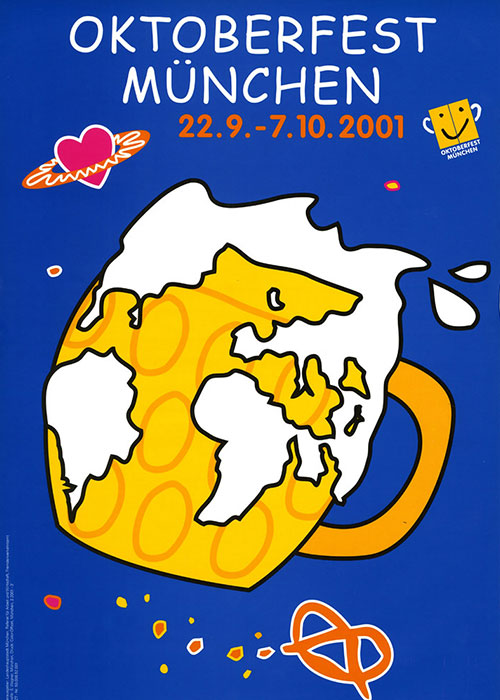
While the majority of visitors to Munich’s Oktoberfest are Germans — over 70 percent — the event still attracts millions of international visitors each year and has solidified itself as a global affair. Designed by Stefanie Wagner, the 2001 poster celebrates the universal love people have for the celebration by representing the Earth as a giant Oktoberfest Maß surrounded by a pretzel comet.
Oktoberfest München 2003
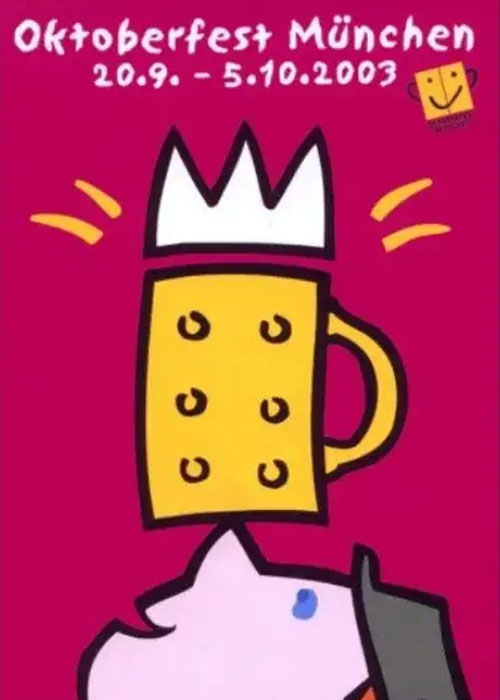
Similarly to Jankowska’s ‘97 and ‘98 ads, Christian Weiss’s 2003 Oktoberfest poster plays off a similar “beer is king” motif. In the illustration, a man balances a mug of beer on his nose, though the goblet itself is wearing the crown.
Oktoberfest München 2005
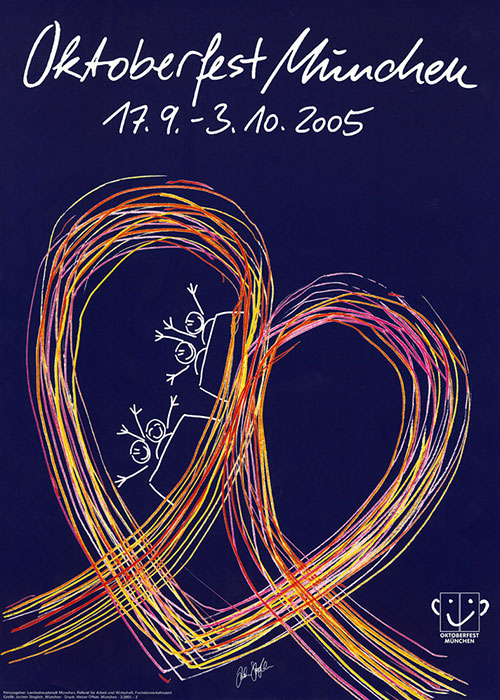
In what is a massive rarity for Oktoberfest posters, the 2005 design illustrated by Jochen Steglich actually does not feature a single chalice of beer. Instead, the poster serves as a nod to the more family-friendly, carnival-like aspects of the celebration by featuring four people riding a roller coaster shaped like the beloved German pretzels that are abound on the Theresienwiese.
Oktoberfest München 2011
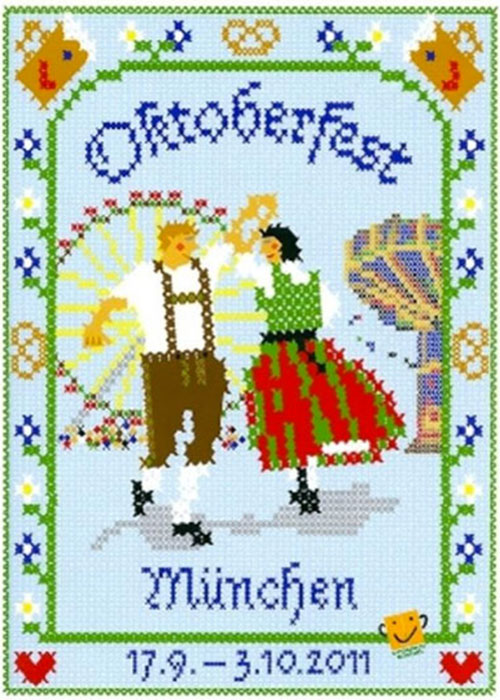
Created by Wolfgang Heinrich Haas, 2011’s poster design is a nod to the practice of parading through town wearing traditional garments, tracht, that dates back to the original Oktoberfest celebration. In the poster, a man wearing lederhosen and a woman dressed in a dirndl are seen performing the Schuhplattler, a traditional Bavarian folk dance through the carnival. The design itself is meant to mimic the style of Schwalm embroidery, which originated in Germany.
Oktoberfest München 2022
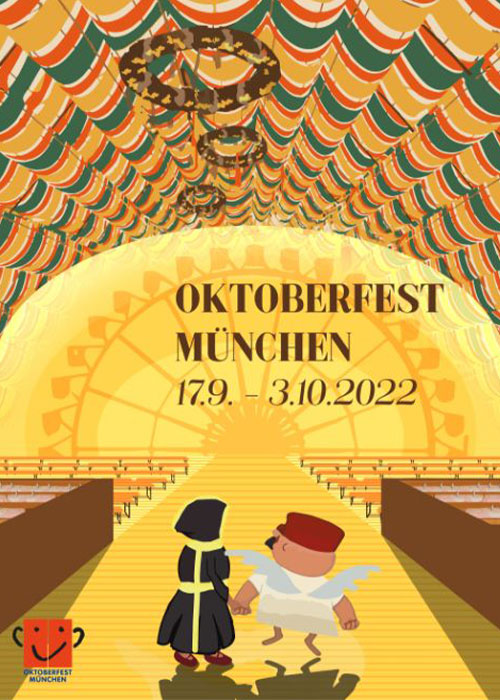
For the first time in over 200 years, Oktoberfest was forced to cease operations for two years during the pandemic. Following the hiatus, 2022’s poster, designed by self-taught artist Leo Höfter, represents the excitement for the festival’s return. In the illustration, the Bavarian beer angel Aloisius and the Münchner Kindl — the monk who Munich is named after — join hands and gaze into an empty beer tent cast in a golden light in anticipation of that same tent finally being filled with joyous celebration once more.
Oktoberfest München 2023
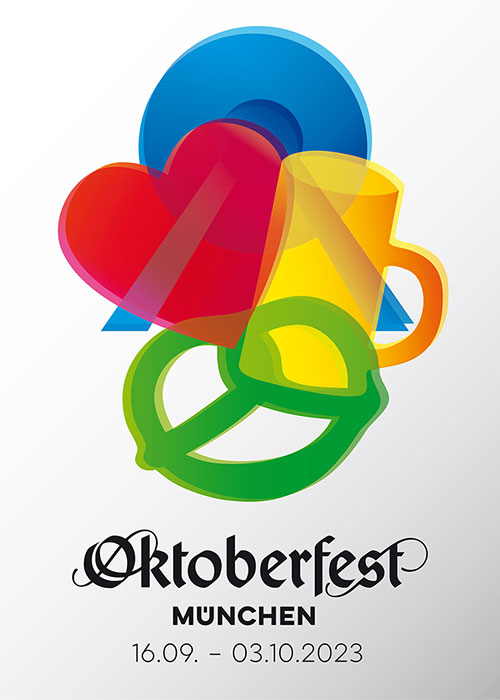
For 2023’s poster, artists were instructed to represent the essence of Oktoberfest by using four elements and basic colors. The winning poster, designed by Monfred Escher, is a layered design featuring a red heart, blue Ferris wheel, yellow beer mug, and green pretzel — four of the festival’s defining character traits. This year’s Oktoberfest kicks off on Sept. 16 and will carry on for 18 days before concluding on Oct. 3.
